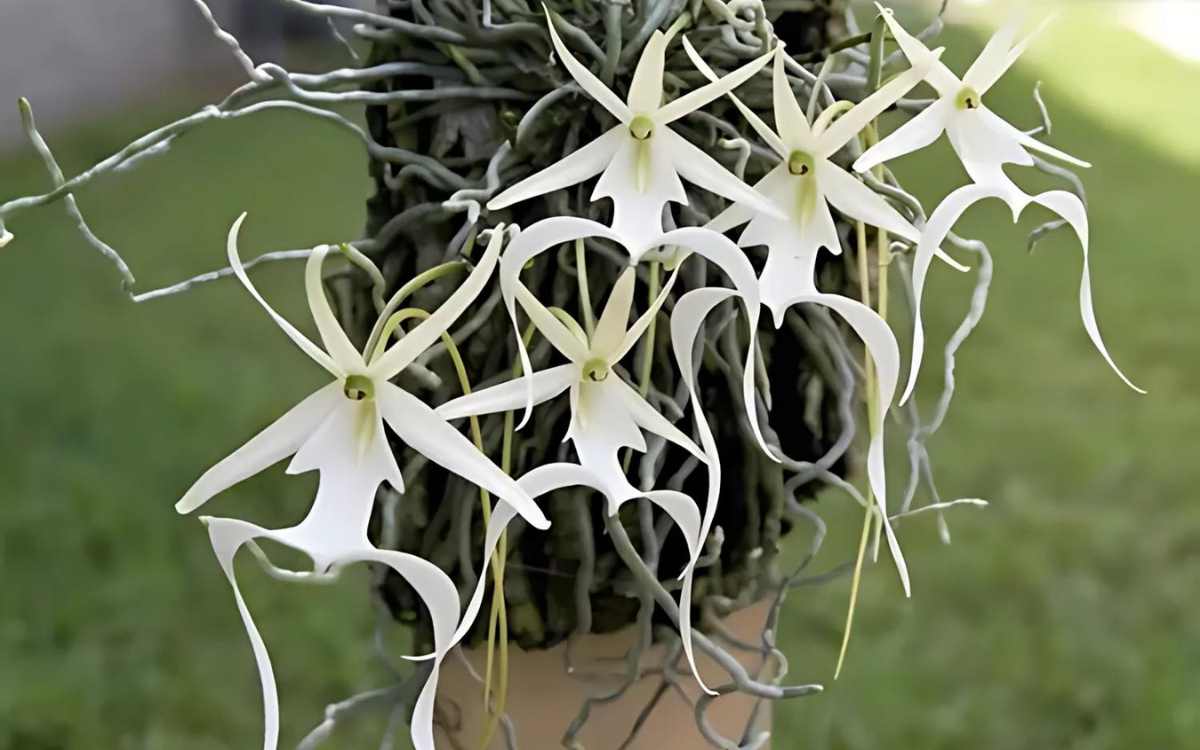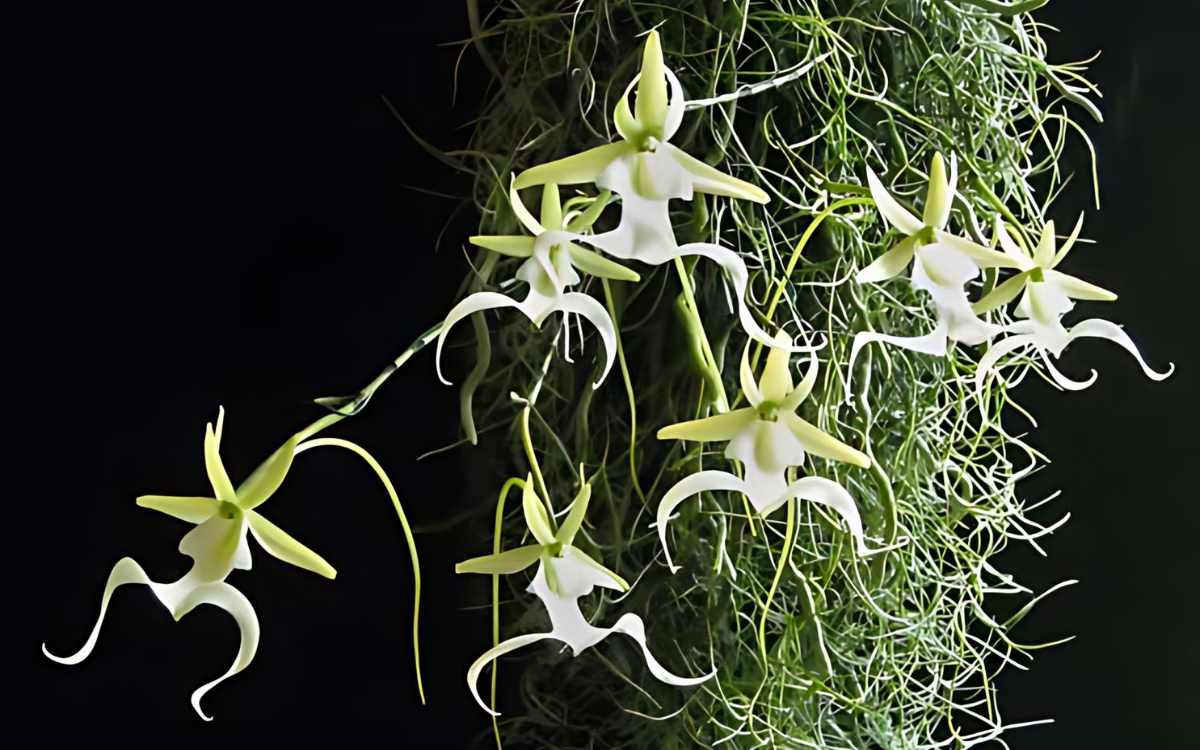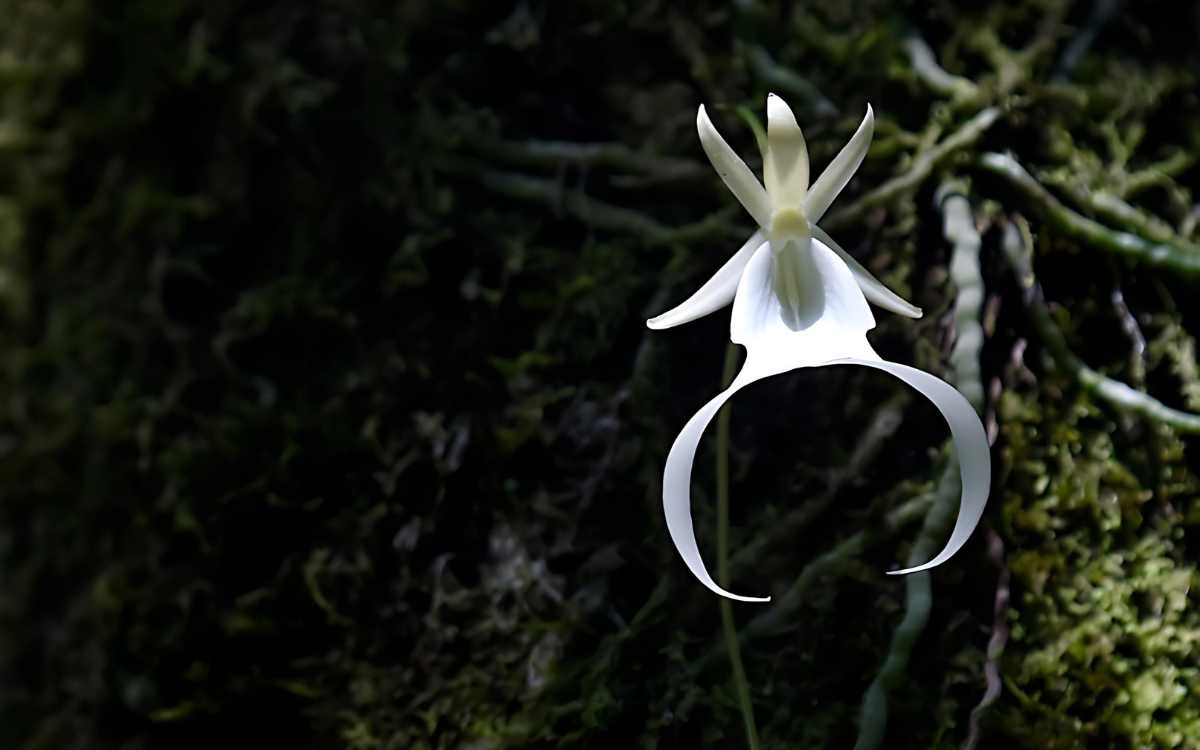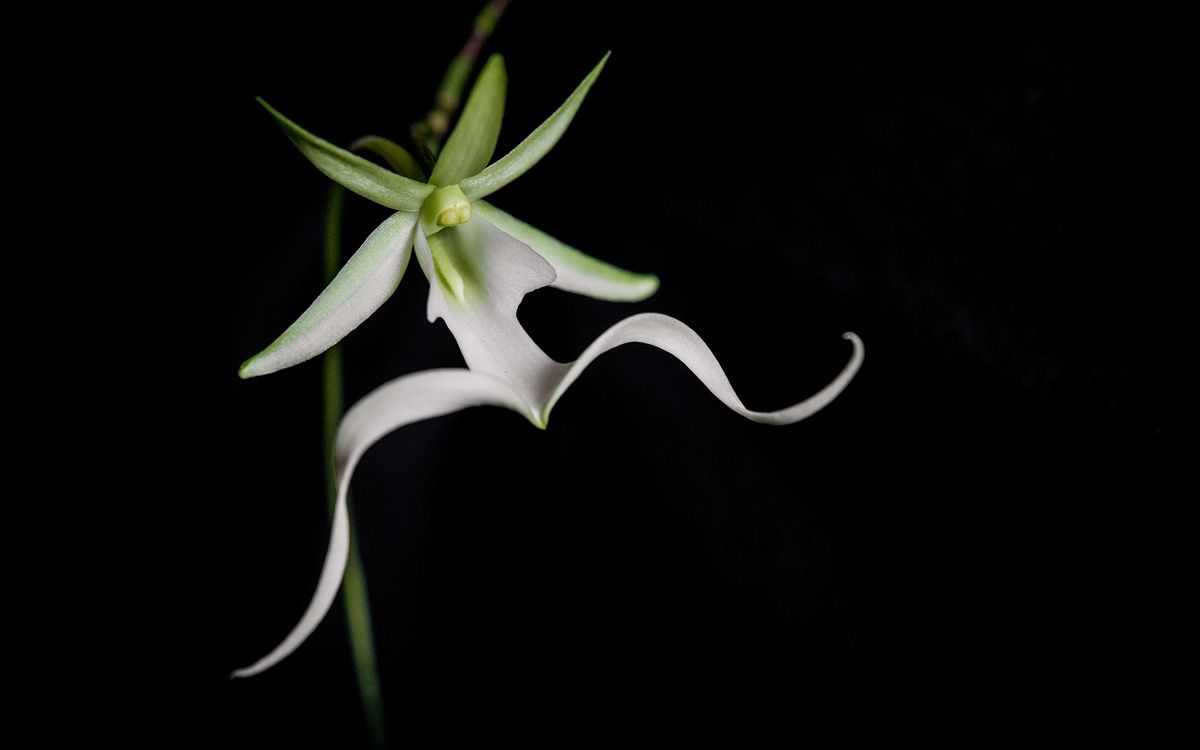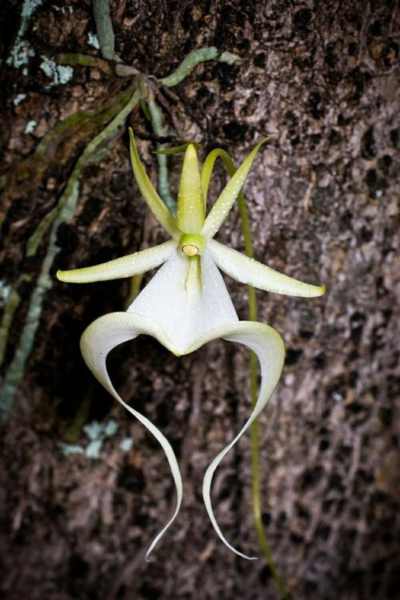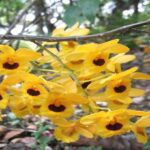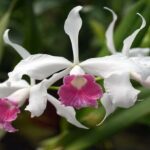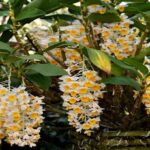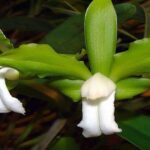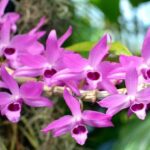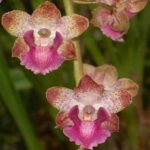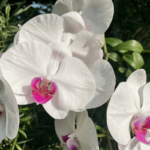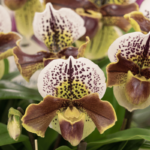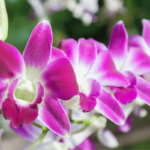The Ghost Orchid (Formerly classified as Dendrophylax lindenii, now classified as Polyrrhiza lindenii) is yet another orchid that stands out due to the shape of its flowers.
Found in the humid and dense tropical forests of Cuba and the swampy woods of southern Florida, this plant owes its nickname both to its appearance and its unique biological characteristics.
Learn How to Achieve Super Blooms on Your Orchids
🛑 If you love orchids and you're tired of not being able to make them bloom...
Then, know that thousands of beginner growers are achieving beautiful flowers on their orchids by following this method.
Click the button below to have beautiful orchids with show-worthy flowers every year. ⤵
Characteristics of the Ghost Orchid
The Ghost Orchid is an epiphytic plant that lacks a stem, consisting essentially of flat, green roots that attach to trees in their natural habitat.
These roots not only anchor the plant but also perform vital functions such as moisture absorption and photosynthesis, thanks to the presence of chloroplasts.
This plant produces between one to ten white, fragrant flowers with delicate “dancing” tails in the wind.
The reproduction of the Ghost Orchid is challenging, producing only a few tiny seeds that require a symbiosis with a specific type of fungus to grow.
This characteristic, along with its specific habitat requirements – areas with high levels of humidity – makes its cultivation extremely challenging and reinforces the prohibition of its collection in the wild.
The preservation of the Ghost Orchid is a priority in the face of threats such as habitat loss, climate change, and illegal plant trafficking.
Restoration programs and conservation planning in reserves and private forests are vital to ensure the survival of this species.
Curiosities
The name of this species is a tribute to the discoverer of this plant, the Belgian botanist and explorer Jean Jules Linden (12/ 02/1817 – 01/12/1898), who found this specimen in Cuba in 1844.
The pollination of the Ghost Orchid by giant sphinx moths is another peculiarity. The flower not only attracts these moths with its nocturnal scent and adapted structure but also contributes to the biodiversity of its habitat.
In addition to biological curiosities:
- The Ghost Orchid has cultural and spiritual significance for some cultures, as well as being a symbol of rarity and beauty in the world of flowers.
- Its rarity and difficulty in being found, especially in the swamps of Florida and other regions of the United States and Bahamas, have made it valuable on the black market for flowers, arousing interest not only from collectors but also from smugglers.
- The story of the Ghost Orchid was immortalized in the book “The Orchid Thief” , highlighting the human passions it is capable of arousing.
- This orchid, which was previously part of the genus Dendrophylax, was recently reclassified to the genus Polyrrhiza.
History of the Plant
Originating from Florida, this plant dazzled the world since its discovery in the 19th century, captivating naturalists, collectors, and nature lovers with its beauty.
Its reputation as one of the most beautiful and extraordinary flowers not only attracted admiring attention but also triggered a series of events that put its existence at risk.
The book “The Orchid Thief,” which tells the tale of orchid hunter John Laroche’s obsession with this and other rare orchids, brought the Ghost Orchid into the general public’s spotlight.
Laroche’s story, imbued with passion, greed, and the relentless pursuit of beauty, reflects the complex relationship of humanity with the natural world. Through this narrative, the book not only popularized the Ghost Orchid but also highlighted the critical importance of conserving these wonderful plants, showcasing the human impact on their fragile ecosystems.
From the beginning, the rarity of the Ghost Orchid and its almost mystical beauty made it an object of intense desire, leading many to risk legality and ethics to possess it.
This covetousness resulted in frequent thefts and illegal collecting, further threatening its already vulnerable existence.
The natural habitat of the Ghost Orchid has suffered significant damage, not only at the hands of unscrupulous collectors but also due to real estate speculation and climate change, bringing it to the brink of extinction.
The story of the Ghost Orchid teaches us about the importance of valuing and protecting each species.

